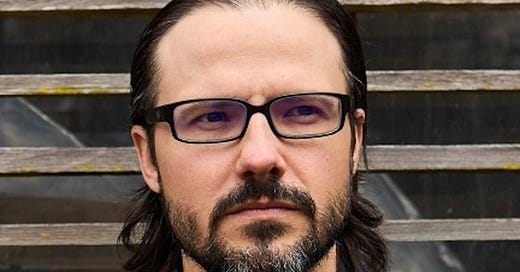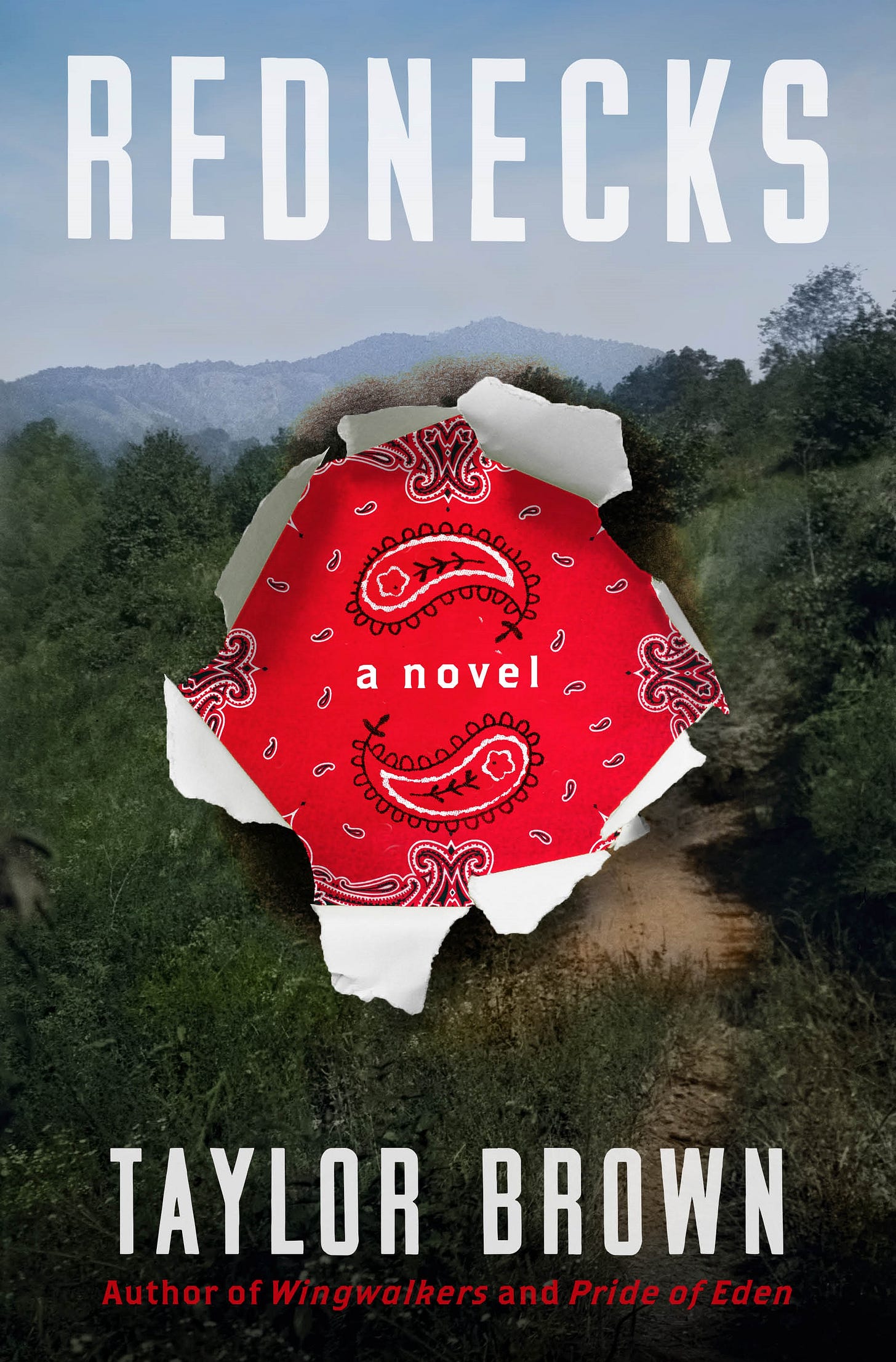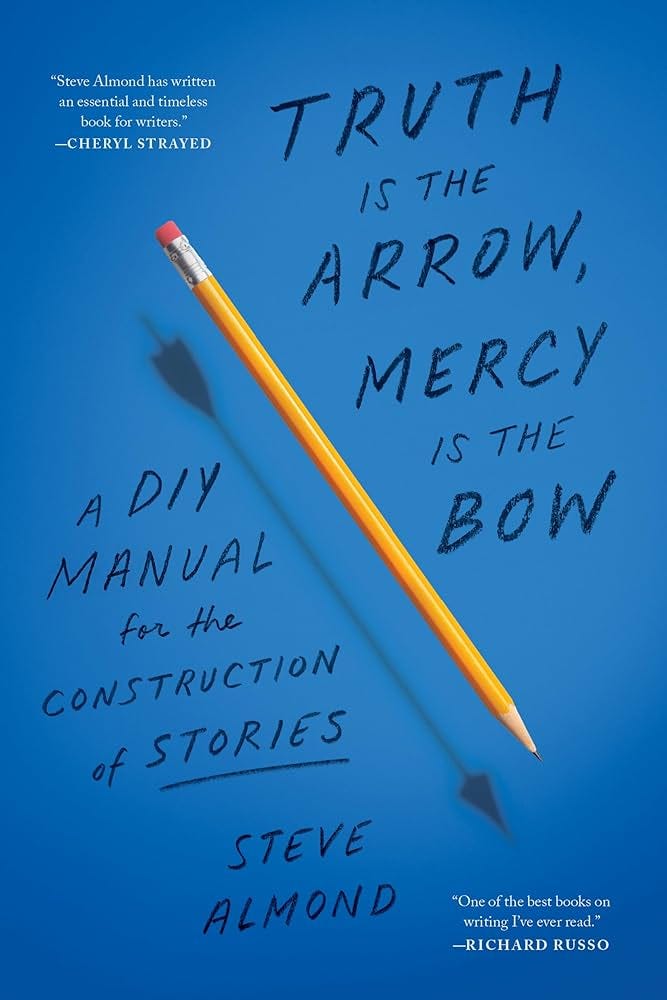I was born in southern West Virginia—specifically Mingo County, in the town of Williamson, West Virginia—and grew up across the Tug River in Pike County, Kentucky. Growing up, the area was called “the heart of the billion-dollar coalfield,” because of the prosperity of the coal mining industry.
In 1920 it was also the home to Battle of Matewan, a notorious gun battle between striking miners and their allies and Baldwin-Felts detectives hired to end the strike. The fight ultimately triggered the Battle of Blair Mountain, the largest labor uprising in American history and the largest armed uprising since the American Civil War.
Taylor Brown chronicles this story in his latest novel, REDNECKS. The book is historical fiction that reads like a thriller, painting a vivid portrait of an under-discussed slice of American history. It’s a propulsive and important story about labor history at a time when unions are on the resurgence and workers are demanding better working conditions and better pay in light of corporations making record-breaking profits.
Taylor’s the latest Five for Them, One for Me.
Let’s go.
FIVE FOR THEM
1. Talk about your new book, REDNECKS. What was the origin point for the story?
About 10 years ago, I was leaning in the in the office door of my friend, mentor, and freelance editor, Jason Frye—a native son of Logan County, West Virginia. We have a long history of bringing up various Southern stereotypes and American myths for research, debate, deconstruction, etc. On this day, the term “redneck” came up.
“You know where that word comes from?” he asked.
I touched the back of my neck. “Sunburn, from working in the fields.”
Jason’s eyes sparked over his big iron-shot beard and he leaned toward me, rubbing his hands together. “Boy, you don’t know the half of it.”
That kicked off my long personal journey into the history of the Battle of Blair Mountain—the largest armed uprising on United States soil since the Civil War. In 1921, ten thousand coal miners rebelled against the coal companies, which had been using an army of private detectives (“gun thugs”) to keep them from unionizing. A million rounds were fired, bombs were dropped on Appalachia, and only the arrival of the United States Army ended the violence. The miners wore red bandanas tied around their necks, and people called them “rednecks.”
I was just astounded that a battle of such cultural and historical significance had been so effectively buried, and I knew I wanted to write about this alternative origin story of the American “redneck.”
2. You’ve written historical fiction in the past. How much fidelity to the facts of the past do you feel you have to maintain while remaining in the service of crafting a compelling story?
I think it really depends on the story itself, and the “contract” you make with the reader, either indirectly or via an author’s note.
In REDNECKS, I wanted to remain quite close to the historical record, simply because we’ve seen this story so rarely in fiction, mainly John Sayles’s Matewan (film) and Denise Giardina’s Storming Heaven (novel) – both from 1987. I wanted to tell the story in a definitive way, with many of the real characters involved, and since it would be the first and only point of exposure for many readers, I wanted to “fly close” to the record as we know it, maintaining a certain rigor.
If this had been a better known story—a Civil War battle, for instance—I’d have had very little interest in telling it in this way. Many of my favorite novels tell an old history in a new way, playing quite obviously with the facts. Books like James McBride’s The Good Lord Bird or Michael Ondaatje’s The Collected Works of Billy the Kid.
In this case, however, the historical facts, quotes, speeches, and newspaper accounts were so unbelievable at times that I didn’t feel the need to twist and warp the story, to tell it inside out or from unexpected angles. Those parts were already in place. I felt more like I was stringing together a whole mountain’s worth of unburied nuggets and snippets and artifacts, thumbing off the dirt and drawing the constellations between them.
So I think, again, it comes down to the story itself, and your vision for telling it.
What I don’t really like is when writers (Hollywood screenwriters, most often) stray far from the historical record out of lazy and formulaic storytelling just to get the response they want from the viewer or reader, to turn the history into the story they want.
I also like an Author’s Note at the beginning or end (my usual choice) to help clarify how close, generally, you stayed to the historical record as we know it.
3. I grew up in the region where REDNECKS takes place. Until the John Sayles movie MATEWAN in 1987, the Battle of Blair Mountain wasn’t commonly discussed, and it was only after the film that its importance seemed understood. What role you think fiction plays in getting these little-known pieces of history back into conversation and to the public’s attention?
I believe fiction is one of the most powerful ways we can unbury and spotlight important stories from our history for wider attention. Scholarly work and history books are essential scaffolding for telling such stories, but the fictioneer can draw people into the story, transport them into another time, put them in the shoes and clothes and even the heads of those involved. Novels are not only time travel devices, but catalysts for empathy and the wisdom necessary not to make the same mistakes over and over again. It’s hard to think of anything more important in our riven world.
4. The world of REDNECKS is not the homogeneous white Scot-Irish portrayal we usually see of Appalachia. Talk a little about the diversity in this book.
That’s right. The original “redneck” miners of the early 1900s stood in stark contrast to how we think of rednecks today—and to popular depictions of Appalachia throughout time. By 1900, one in five West Virginia coal miners was Black, and one third were foreign-born (wvculture.org). Politically, they were pushing for social progress and economic justice, workers’ rights, and the freedom to unionize.
Some of the most powerful images to me were those of the tent colonies where striking miners were forced to live after being evicted from coal company housing. You see folks of different colors and likely different religious and linguistic backgrounds living side by side. It’s sad that this is so surprising to us a century later, but in the Mine Wars era, you really did have a multiethnic class of workers coming together under the banner of “Solidarity Forever.”
5. The best historical fiction uses the past to shine a light on the present. REDNECKS portrays a fascinating point in the history of labor rights, which is circling back around as unions resurge after a decades-longs decline. Do you see parallels between the story of REDNECKS and today?
Oh, absolutely. Labor is obviously having a moment now, from the 2023 Writers Guild strike to the UAW efforts in the South to unionization efforts at Starbucks and Amazon.
Perhaps I sensed that wave coming while I was writing REDNECKS, but more directly, I was seeing parallels to the civil upheavals of the 2020s. The coal miners of the 1920s were facing many of the same battles that marginalized groups still face today: police brutality, uneven application of the law, a lack of legal protections from exploitation and corporate overlords, and a ruling class that regarded them as something less than human.
I think, for the folks involved, the march on Blair Mountain was less a labor battle than a civil rights one. One of their slogans in an earlier march had been “To Establish the Constitution.” There was a real sense that the full rights and liberties the United States was created to ensure were not reaching the hollers of West Virginia. I think you might find a similar sentiment in many rougher parts of America today.
In 2020, Tyler Childers released the album Long Violent History. In the titular song, he makes a direct parallel between the civil rights protests, marches, and riots of our era and the Battle of Blair Mountain. I realized someone else – another artist I respect and admire – was seeing it the same way as I was, as I’d already made that parallel in early drafts of the novel. So that was really heartening for me at the time.
ONE FOR ME
1. Your bio lists you as “Taylor, an Eagle Scout.” To achieve this—the highest rank attainable in the Scouts BSA program—you have to earn at least 21 merit badges and complete an extensive service project. What was your final project to become an Eagle Scout?
Ha! Been a while since I thought of that. My final project was building an outdoor classroom for Oglethorpe Point Elementary School on the north end of St. Simons Island, Georgia—then a newly opened school. We mainly built picnic tables to go in a grassy area between a couple halls of the school. Now I’m curious to see if they’re still there!
TALKING CRAFT
We talked a while back about craft books, and then I immediately went out and bought Steve Almond’s TRUTH IS THE ARROW, MERCY IS THE BOW. Called “a DIY manual for the construction of stories,” it’s as much about frailty and the struggle to bring truthfulness to the page as it is about plot, direct characterization, or writer’s block. Almond writes with blunt honesty about his hardships in writing, and he emphasizes emotional openness and empathy in the craft. He even includes a section devoted to entitlement.
While perhaps not a must-add to your library alongside ON WRITING or McKee’s STORY, it is a beautifully humanistic ode to the importance of storytelling and the connective power of story. You won’t go wrong with it.
That’s all we’ve got for now. Thanks for coming. See you next time, and hey, let’s be careful out there.







Loved this interview. Keep 'em coming.